Bangkok, Thailand
Sawadee Krap! Welcome to Thailand, the Land of Smiles. The ancient city of Bangkok began as two small trading posts — Thonburi and Rattanakosin — during the 15th century Ayutthaya Kingdom. Siam avoided colonization but the late 20th Century Asian investment boom transformed the cityscape into an intoxicating mix of new and old as Bangkok expanded to 10 million inhabitants.

Today, Bangkok still hosts many beautiful ancient wats (temples) and smiling vendors selling delicious street food on its loveable, vibrant, polluted, traffic-jammed streets.
Times Square, New York City, USA
Few parts of the Big Apple have changed as much as this beloved thoroughfare. Originally named Longacre Square, Times Square began life as a small, old-timey village and became the center of NYC’s horse carriage industry thanks to William Henry Vanderbilt’s American Horse Exchange.
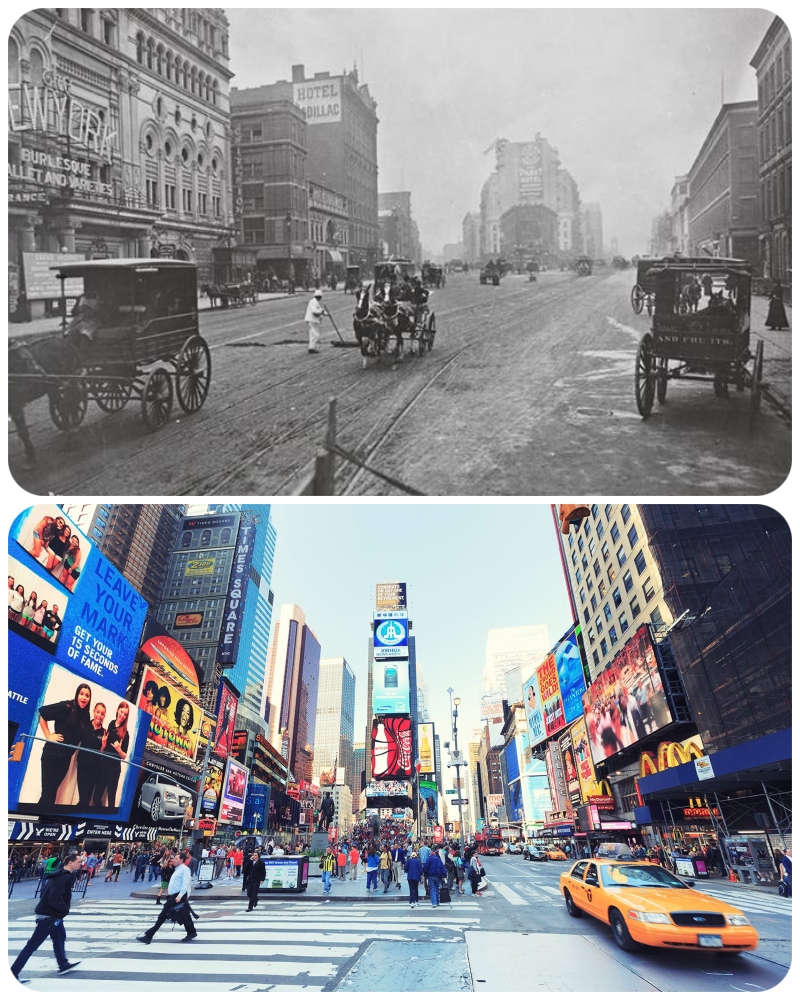
He set it up with his $100 million inheritance. Nice work, if you can get it! It was renamed when a new-fangled subway station was built in the late 1800s. Nowadays, Times Square and the adjacent Broadway theater district attract millions of visitors, especially on New Year’s Eve.
Tokyo, Japan
Tokyo began life as a small fishing village called Edo, which became the Eastern Capital in 1868. This first photo seems to show Japan’s capital city laid bare after a Godzilla attack or after the city was leveled by the 1923 Great Kantō earthquake. But, it actually comes from 1945, specifically from raids during World War II.

Fast forward to today, and Tokyo is one of the most culture-shocking, futuristic cities in the world. Its mind-bogglingly massive metropolitan area is home to 37 million residents.
Central London, UK
Can you believe William the Conqueror built the Tower of London over a thousand years ago in 1078 AD? The modern Tower Bridge was added in 1886, but much of London has changed since this 1920 photo. In fact, the UK capital has changed a lot in the last 20 years.
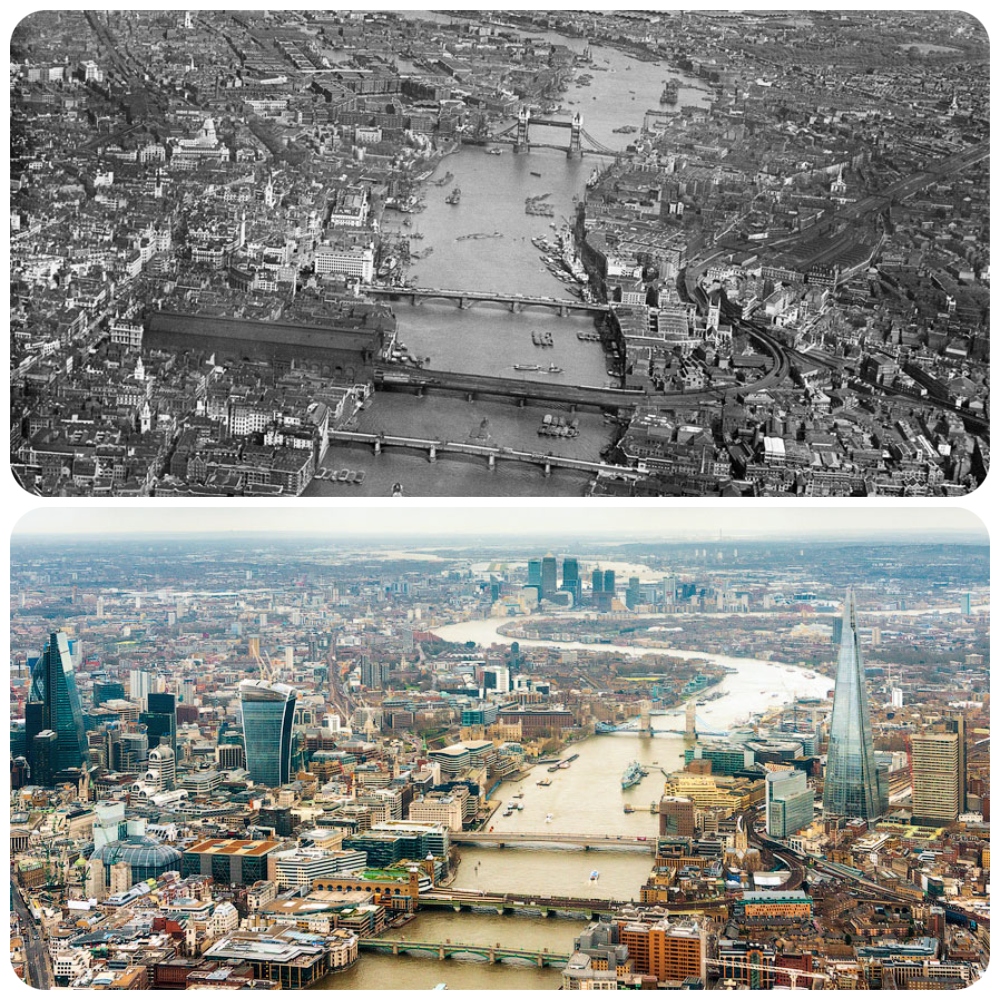
Dozens of 21st Century skyscrapers like the pointy glass Shard building have transformed the famous skyline beside the River Thames. As for the tall buildings in the background of the color photo, that’s Canary Wharf.
Tel Aviv, Israel
Israel’s White City was founded in 1909 by a dozen Yishuv families. They famously divided up land by using seashells to create a modern housing estate outside Jaffa. Today, Tel Aviv-Yafo has a population of 460,000.

Residents enjoy an excellent quality of life and love to party in the Mediterranean capital of cool. The wild, non-stop “party capital” has everything you need — beaches, nightlife, great vegan food… and often features on lists of Best Cities in the world.
Buenos Aires, Argentina
Meaning “fair winds” in Spanish, Buenos Aires was originally founded on the western shore of the River Plate in 1536 by a Spanish expedition led by Pedro de Mendoza. Over the centuries, Spanish colonizers created a beautiful capital city, rich with Parisien-style buildings and leafy boulevards.

But in modern times, the Argentinians have gone one better. Still charmingly European around the edges, the center is a bustling, modern hub of culture, arts, entertainment, and tourism. The Argentinian capital is a marvel of world design.
Istanbul, Turkey
Founded as Byzantium in the 7th century BC and renamed Constantinople after the Roman Emperor Constantine in 330 AD, Istanbul has been an imperial capital for the Greek, Roman, and Ottoman empires. The city has always been a gateway between European and Asian peoples, cultures, and cuisines.
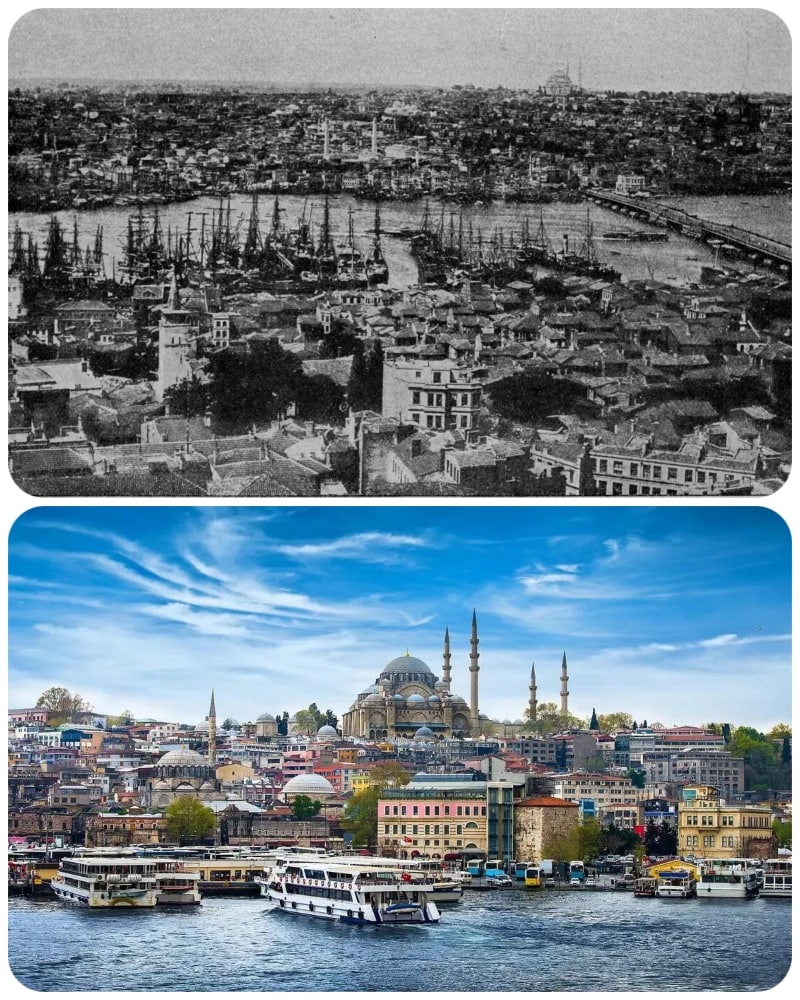
Luckily, it’s kept many of its charms and hasn’t been washed away by modernity. These photos from 1905 and today show the beautiful Blue Mosque — a.k.a. Sultan Ahmed Mosque — built in the early 1600s. Don’t go changing, Byzantium, errr… Constantinople, we mean Istanbul.
Florence, Italy
These photos show the Ponte Vecchio in Florence, northern Italy. Luckily, the famous bridge survived the villainous plan to destroy the city’s bridges as British troops closed in on a once-fascist-occupied Italy.

Thankfully, beautiful Florence is a UNESCO World Heritage Site, so it looks the same now as when the Renaissance began there hundreds of years ago. Today, it’s easy to imagine Florence back when the Medici family, Dante Alighieri, and Niccolò Machiavelli walked its charming streets.
San Francisco, USA
While the foreground of this 1947 photo — captured from the Twin Peaks — remains much the same, the central business district has wholly altered San Francisco’s skyline. You can see the City Hall and Market Street in both photos.

San Fran developed like many other cities, but the 1990s dot-com boom and the mid-2000s social media boom brought a second and third wave of skyscrapers and gentrification. Today, rent in San Fran is $4,500 a month. Thinking of buying? Think again. House prices average $1.5 million. Thanks, Zuckerberg!
Kuala Lumpur, Malaysia
Kuala Lumpur was only founded in 1857 to house the British colonial administration. On the left is the quaint town in the early 20th Century. Fast forward a hundred years, and KL is one of the most chock-a-block cities in the world.
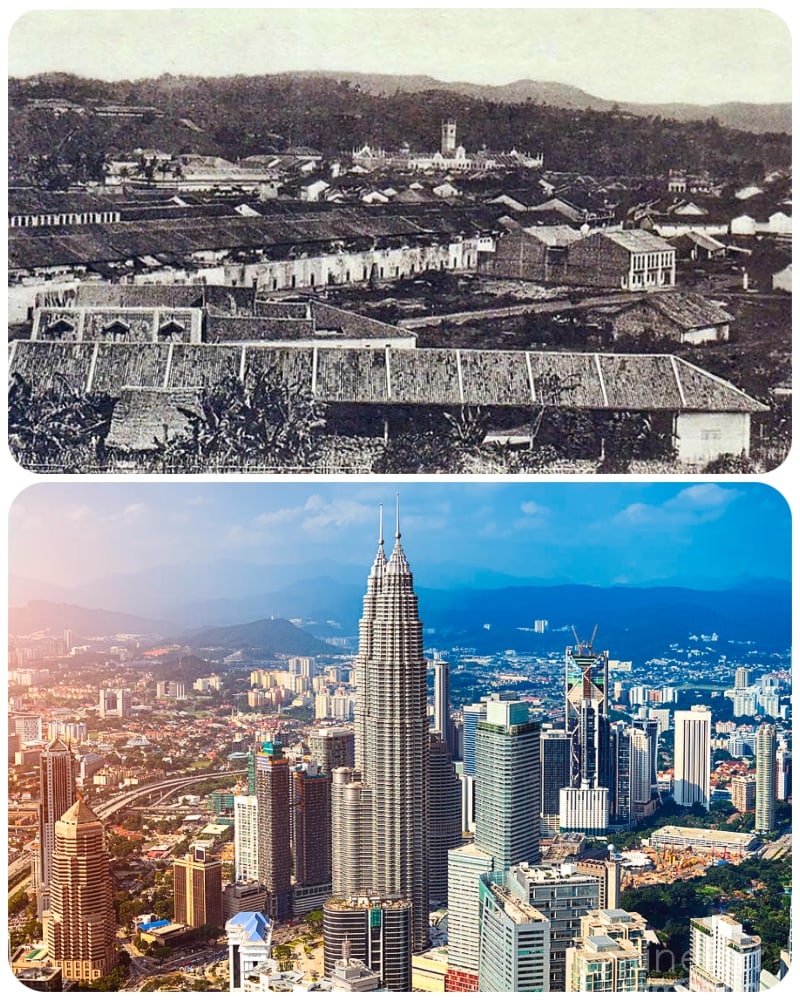
After gaining independence from the British and the Japanese, Malaysia’s growth bloomed, especially in the 1990s. Today, KL’s skyline is dominated by high-rise buildings. From 1998 to 2003, the Petronas Towers were the world’s tallest building. They remain the world’s tallest twin towers.
Sydney, Australia
Australia’s most populous city’s skyline has been dominated by the famous Sydney Harbour Bridge since it opened in 1932. Today, the surrounding area looks much the same, but can you spot which of Sydney’s most famous landmarks is missing from this 1955 photograph?
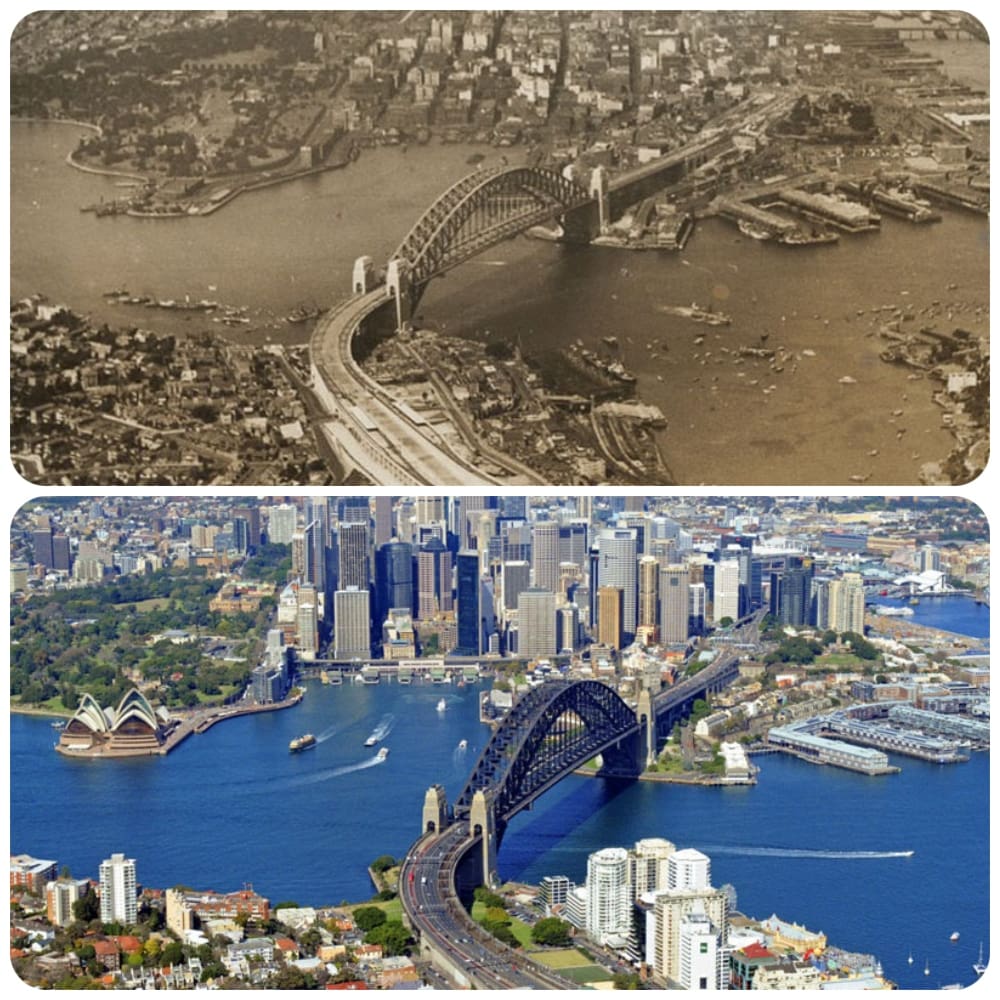
That’s right — it’s the Sydney Opera House, which was added in the 1970s. The city’s central business district has also been transformed by many high-rise office buildings. Sydney often ranks in the top ten most liveable cities in the world. Sadly, it’s also one of the most expensive.
Los Angeles, USA
When Los Angeles was created, it was a rural paradise named the “City of Angels” in Spanish. Nowadays, it’s a mecca for filmmaking and entrepreneurism. Every third person is a billionaire, and you need a bank loan to buy a skinny frappucino!
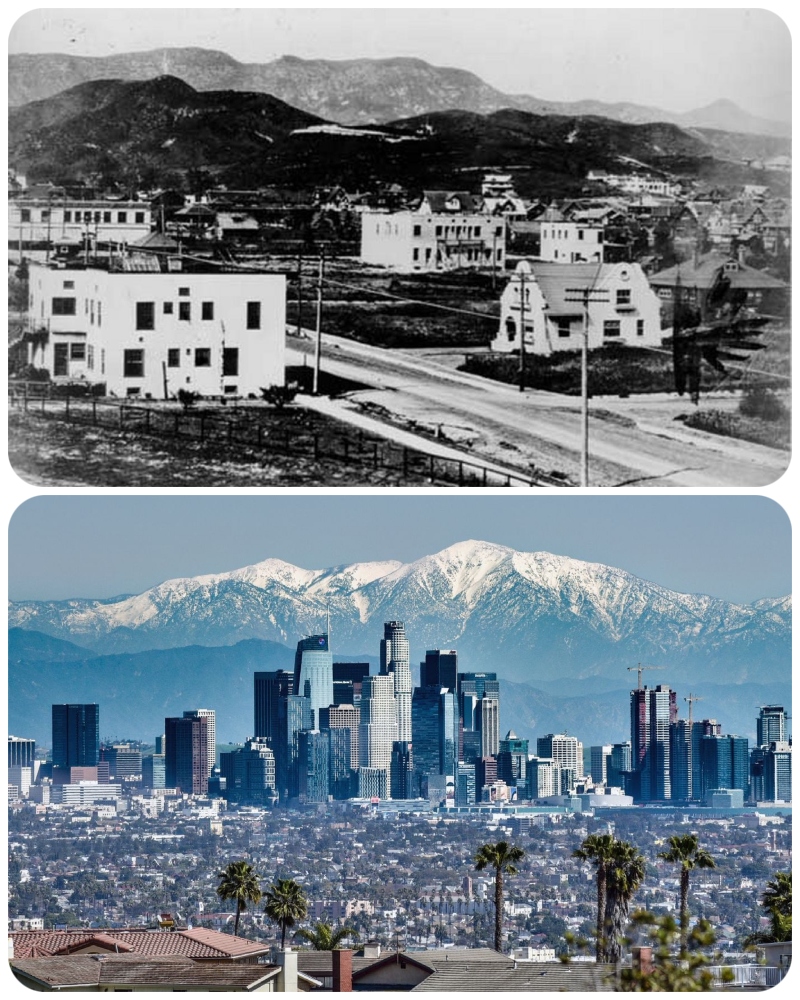
The downtown financial area boasts a few skyscrapers, but the majority of L.A.’s architecture remains surprisingly flat. Can you spot the HOLLYWOOD sign? This photo was taken at the intersection of Hollywood and Highland in 1907. In the background are the famous Hollywood Hills, even before the HOLLYWOOD sign read HOLLYWOODLAND.
Hong Kong, China
Now, if you don’t speak Cantonese, Hong Kong means “Fragrant Harbour.” In 1841, the British liked the smell, so they stuck a flag in the sand. It remained a British colony until its handover back to China in 1997.

Hong Kong was already a global financial center then, but today the area under Victoria Peak lights up in a neon glow like something from Blade Runner. The city-state on the Pearl River is home to 7.5 million residents packed into 426 square miles, making it one of the world’s most crowded places to live.
Cape Town, South Africa
Sitting under Table Mountain, Cape Town was founded by the Dutch East India Company as an outpost for Dutch ships sailing around the Cape of Good Hope to East Africa, India, and the Far East. The country’s colonial masters built a European-looking city, but today “The Mother City’s” architecture and town planning is a masterpiece featuring some of the world’s best infrastructures.

Snuggled between modern architecture and high technology — like the Cape Town Stadium, for example, one of the world’s most impressive stadiums — you can still find gorgeous, colonial Victorian-era buildings.
Las Vegas, USA
Notorious gangster Bugsy Siegel was instrumental in creating Las Vegas as a gambling haven in Nevada’s Mojave Desert. This picture shows the famous Golden Nugget Hotel on Fremont Street in 1953. Over the decades, Las Vegas became the USA’s most popular resort city, attracting millions of visitors every year for its gambling, entertainment, and nightlife.
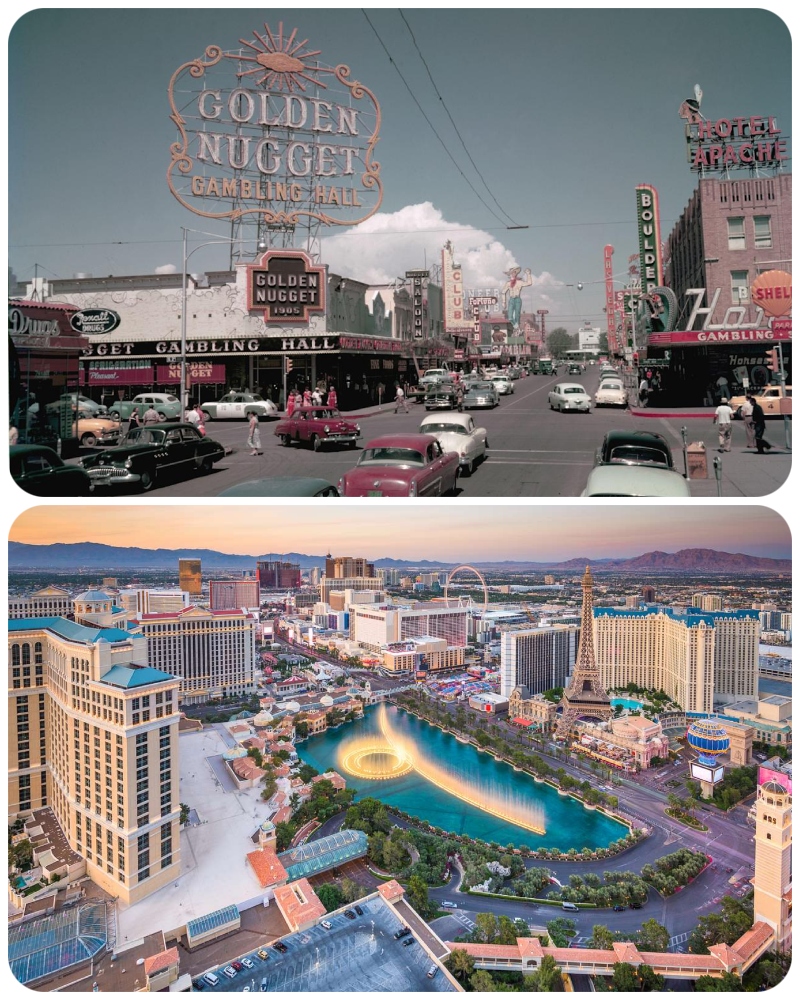
Las Vegas means “The Meadows” in Spanish. Today, the city bills itself as the Entertainment Capital of the World, while visitors know it as “Sin City” because… what happens in Vegas stays in Vegas!
Macau, China
Macau began life as coastal islands that China’s ruling Ming dynasty rented to the Portuguese to use as a trading post in 1557. As recently as 1964, it remained a quiet fishing town.
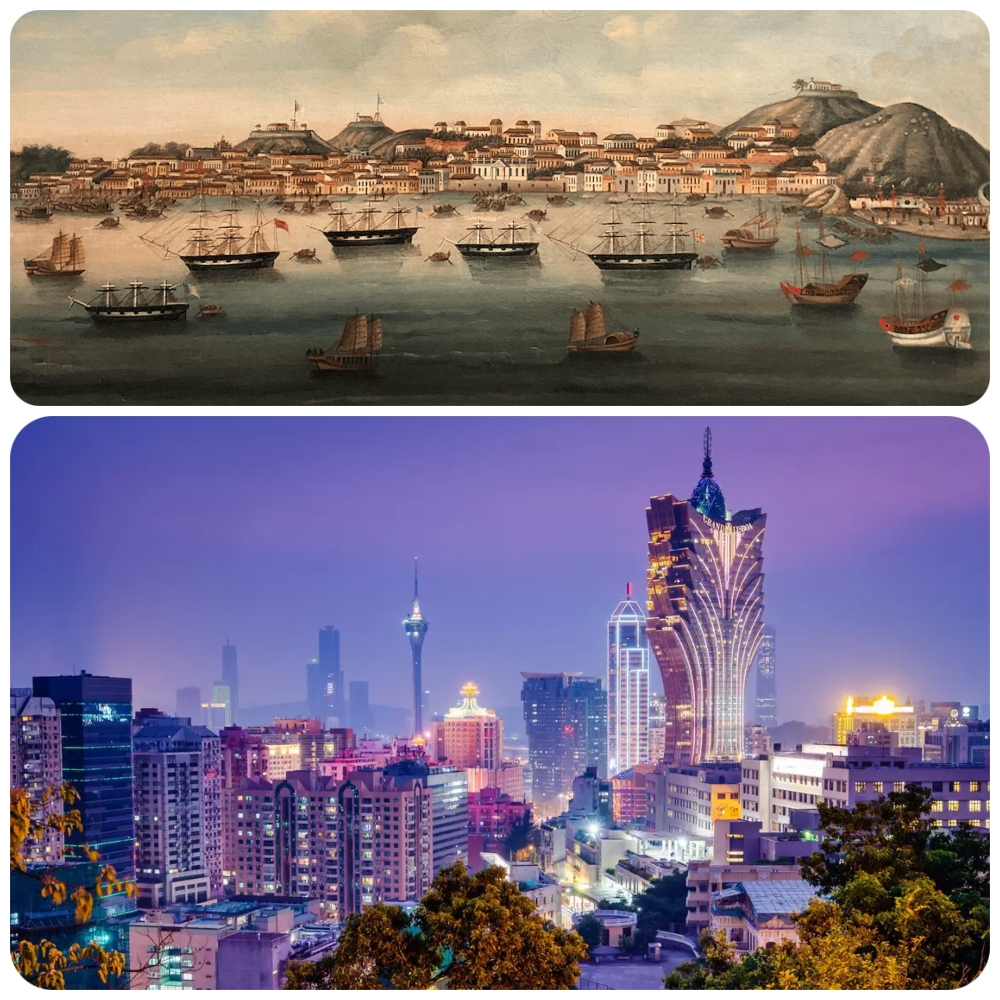
Today, Macau has a population of almost 700,000 living within an area of 12.7 square miles, making it the most densely populated region on earth. Known as the “Las Vegas of the East,” Macau is now a major tourism resort city with a gambling industry seven times larger than Vegas.
Athens, Greece
This stunning photo of Athens shows the ancient city in 1862. Named after Athena, the Greek goddess of war, the Mediterranean megalopolis’ history dates back 3,500 years. Today, four million people occupy the European Union’s seventh-largest city. Yet, while many more buildings have popped up, there are few high-rise carbuncles.

As such, the municipality has kept much of its old-world charm. The hill you see is Mount Lycabettus. Athena created it when she dropped a limestone mountain meant for the construction of the Acropolis.
Dar Es Salaam, Tanzania
Two hundred years ago, Mzizima (Swahili for “healthy town”) was a coastal fishing village. Majid bin Said, the first Sultan of Zanzibar, founded Dar Es Salaam on the site in 1865 when Tanzania was part of German East Africa. Today, Tanzania’s capital is one of Africa’s most developed and impressive cities.

During the 2000s, business prospered and Tanzania’s port and road infrastructure became a trade hub for the surrounding landlocked countries. The city’s skyline features many skyscrapers — including the Tanzania Ports Authority Tower, the tallest in the country.
Dubai, United Arab Emirates
Dubai was initially founded as a simple fishing village in the early 18th century. But after oil was discovered in the region in the 1960s, the township grew at a phenomenal rate to become a buzzing, modern city. And it’s even changed this century.
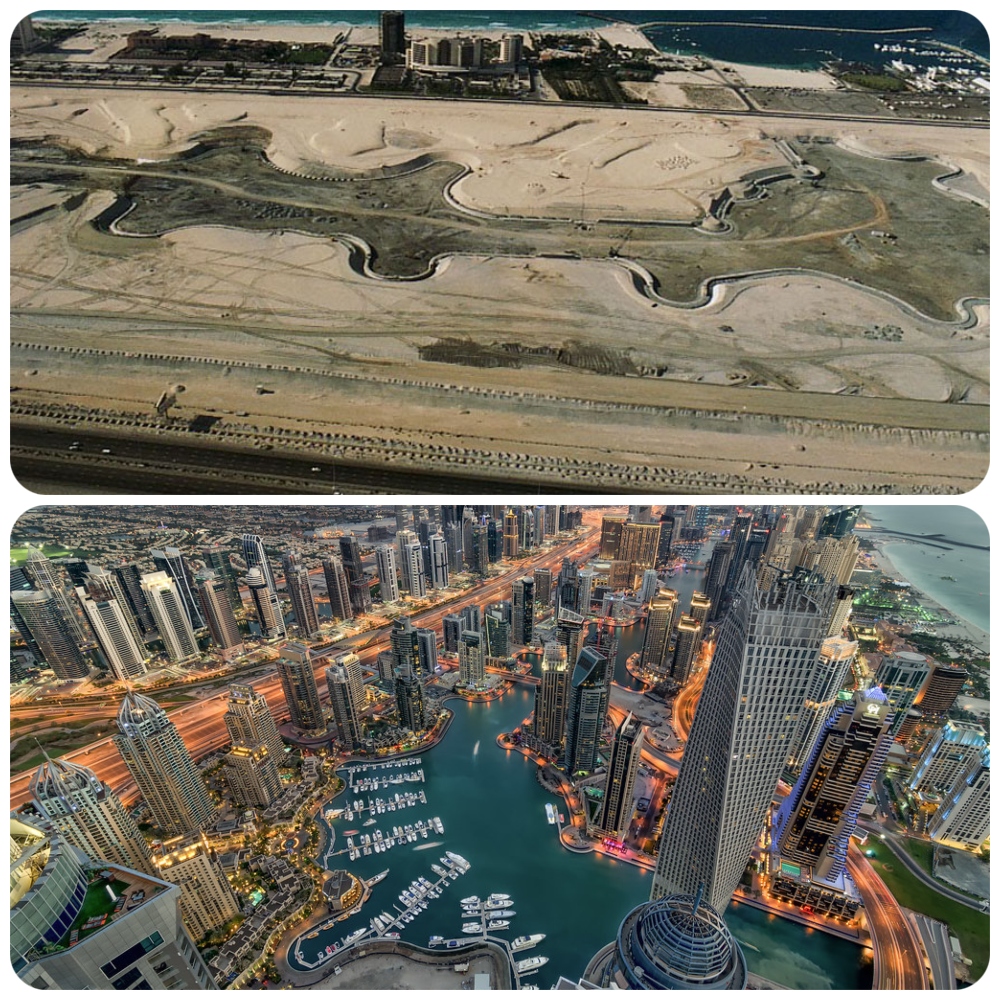
Nowadays, the artificial canal city is the pearl of the Middle East and a mecca for tourism. It also features the tallest building in the world, the Burj Khalifa — which is a whopping 2,717 feet tall.
New York City, USA
New York, New York — so good they named it twice… the Big Apple has changed immeasurably over the decades. But, some buildings are still recognizable from this 1962 photo of Lower Manhattan. Of course, the modern metropolis of Lower Manhattan is dominated by the new World Trade Center.
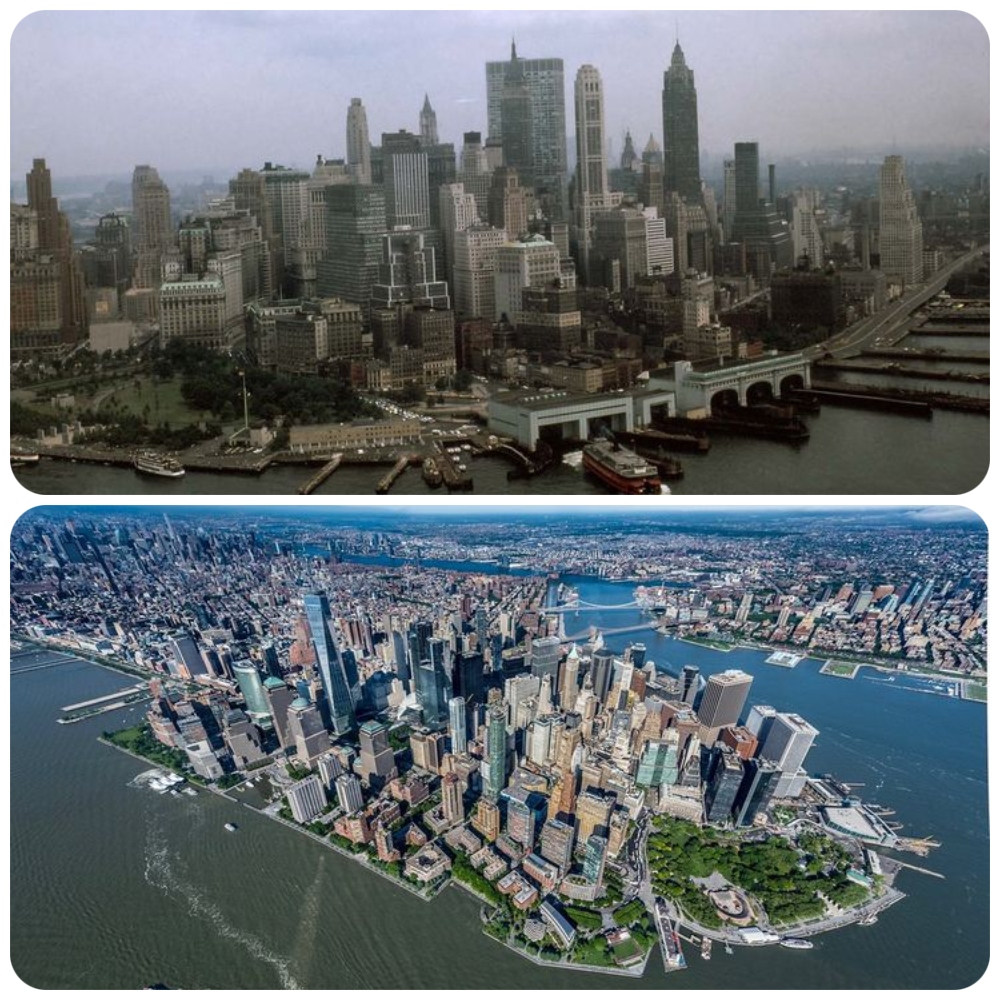
One World Trade Center was built to replace the twin towers after the terrorist attacks of 9/11. It stands at 1,268 feet and often shines a light high into the night sky as a beacon of hope.
Abu Dhabi, United Arab Emirates
Another city in the United Arab Emirates that’s seen unprecedented growth is the island city of Abu Dhabi. It began life in 1793 when the House of Nahyan family migrated to the island after the discovery of fresh water at the Liwa Oasis there. Then, oil was discovered in the 20th Century.
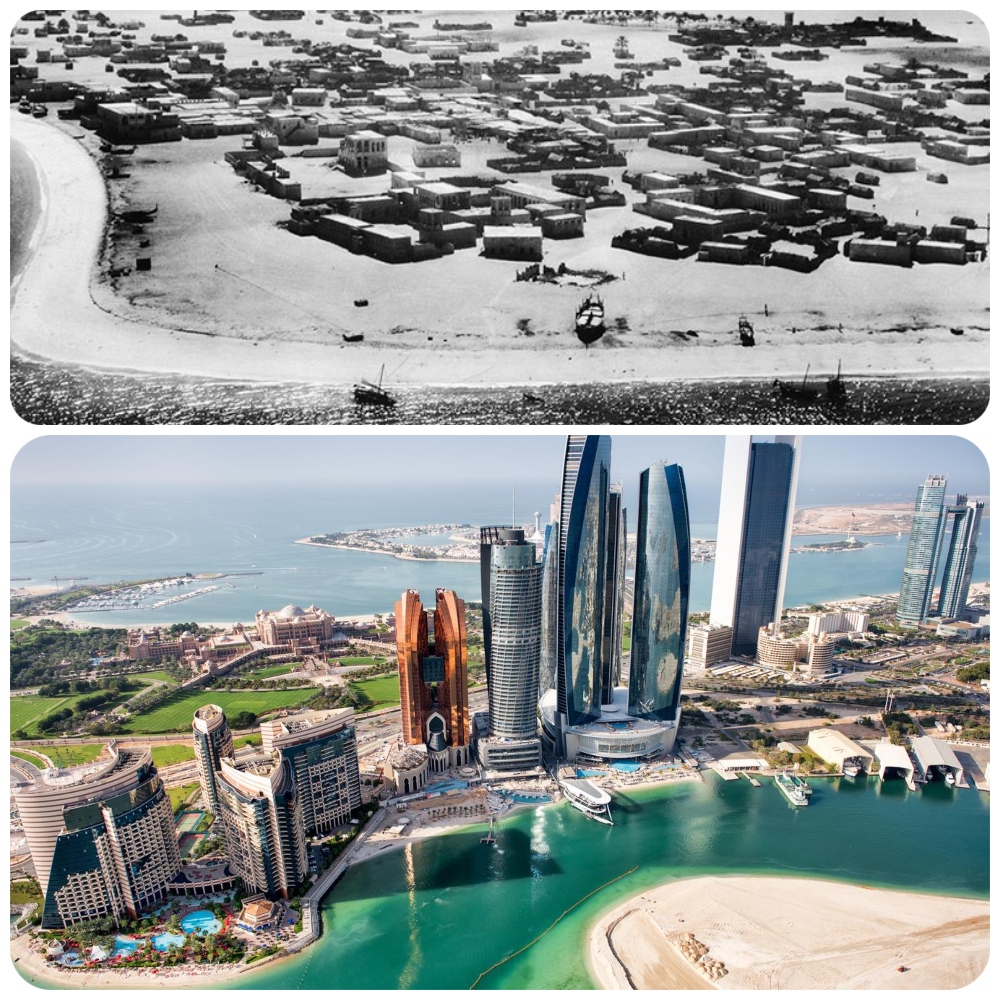
Today, the Nahyan family still rules. Abu Dhabi is the UAE’s glittering capital and second-most populous city, with 1.5 million citizens. It sits on the Arabian Peninsula, adjoining the Persian Gulf.
Shanghai, China
Captured in 1927, this photo shows Shanghai’s waterfront boulevard known as The Bund, running along the bank of the Huangpu River. These European-style buildings — like the old Shanghai Bank building and the North China Daily News Building (now the AIA Building) — still stand today, but the rest of old colonial Shanghai is gone.

Nowadays, Shanghai is the second most populous city in the world, with 25 million inhabitants. A staggering 40 million live in the Shanghai metropolitan area. The city’s gross domestic product of $1.33 trillion exceeds Mexico’s entire GDP.
Teotihuacan, Mexico
Not every city has gone from sleepy fishing village to sprawling metropolis. In fact, some have gone the other way. Teotihuacan is an ancient Mesoamerican city just northeast of Mexico City.

Built somewhere between 400 BC and 300 AD, Teotihuacan was the largest city in the Americas. It covered eight square miles and had a population estimated at 200,000. Over time, it was deserted and was only rediscovered in the 1700s. For centuries, the Pyramids of the Sun and Moon had been buried under an earth mound until excavated in 1910.
The Pyramids of Giza, Egypt
Did you know that most photos of the Pyramids are taken from one side to show the desert behind them? While the mysterious structures were surrounded by deserts on all four sides for thousands of years, Cairo has encroached within several hundred meters of the ancient Egyptian site.
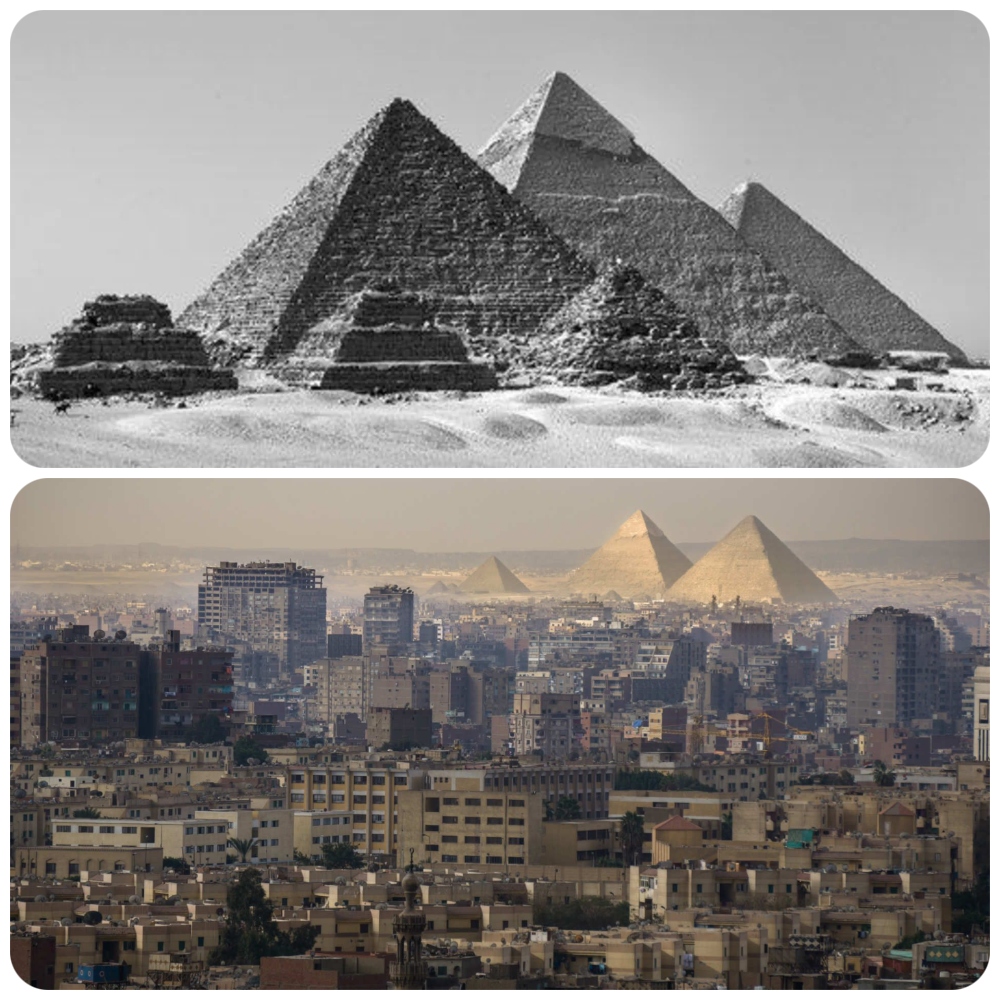
You can even dine in a nearby Pizza Hut and gaze out of the window at the Pyramids. Cairo is a city of nine million inhabitants, and no one wants to see photos of a dirty, polluted city behind the only surviving wonder of the ancient world.
Cairo, Egypt
While Cairo encroaches on the Pyramids, another of the city’s less famous landmarks remains untouched. Built during the Bahri Mamluk period between 1356 and 1363, the Mosque-Madrassa of Sultan Hassan might not be as old as the pyramids, but it’s still an important monument.

Even though the city’s skyline is punctuated by a few skyscrapers, the historic mosque looks just like it did when the photo was taken in 1930… and probably much like it did when it was built 700 years ago.
Seoul, South Korea
Did you know that Seoul’s official name is Seoul Special City? No, nor did we until we looked it up! The history of South Korea’s capital can be traced back as far as 18 BC, and the city remained relatively underdeveloped until vast expansion in the latter part of the 20th Century.

Nowadays, many ancient landmarks like the Hwanggungu Pavilion, Gyeongbok Palace, and Gwanghwamun Gate remain perfectly untouched. But the rest of Seoul has become one of the most modern, bustling cities in the world, with 10 million tech-loving inhabitants.
Vilnius, Lithuania
In 1812, on his way to try to take Russia, Napoleon called Vilnius “The Jerusalem of the North.” The city has seen its fair share of war, from the Napoleonic Wars, through WWI and WWII, and was part of the USSR. Soviet brutalist architecture threatened to destroy the Old Town’s charm.
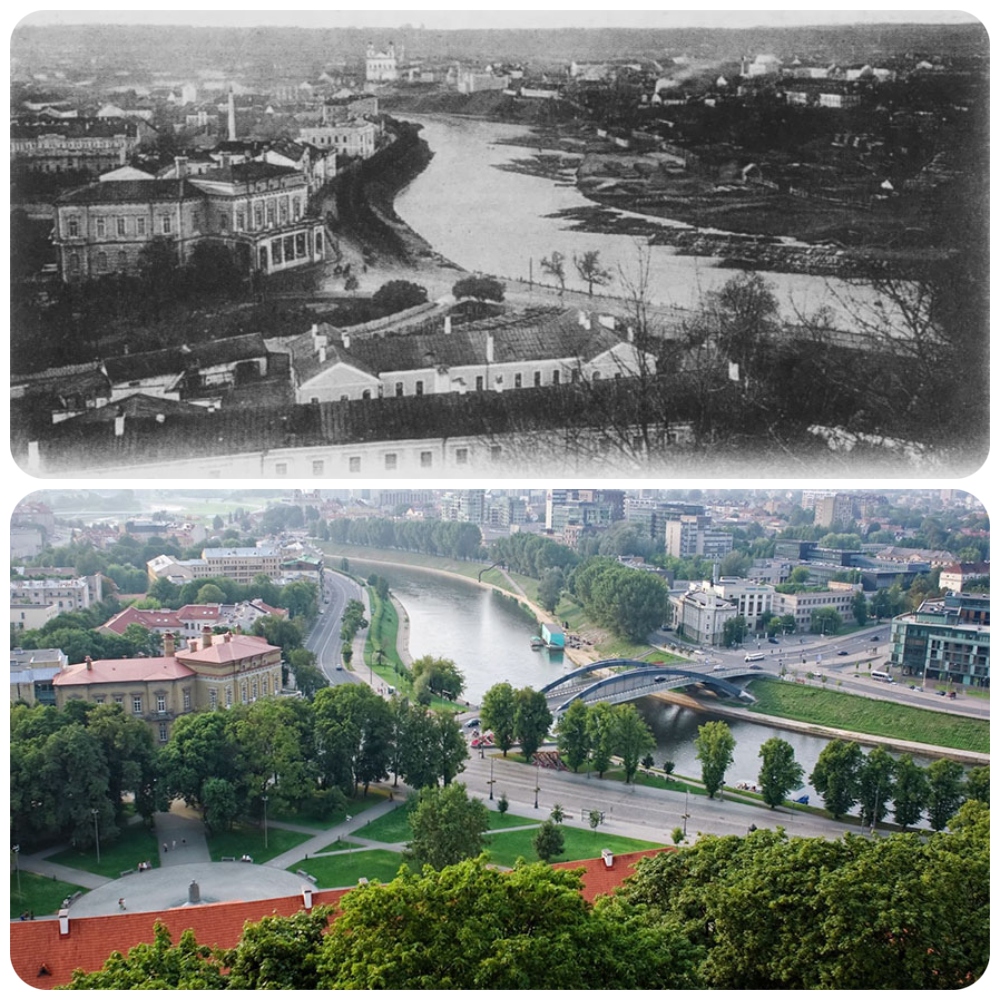
But, as the empire crumbled, Lithuania was the first republic to declare full independence. The Baltic city’s beautiful Old Town district was declared a UNESCO World Heritage Site in 1994. Along with Riga in Latvia and Tallinn in Estonia, Lithuania attracts millions of visitors every year.
Moscow, Russia
This 1893 photo shows The Kremlin in all its former glory. It was built by the Rurik dynasty between 1482 and 1495. The word means “fortress inside a city,” which is handy as the imposing Russian citadel complex features five towers and four cathedrals surrounded by the Kremlin Wall.

Today, the Kremlin is the official residence of the Russian President. It overlooks the Moskva River to the south, Saint Basil’s Cathedral, and Red Square to the east.
Paris, France
While Paris has grown into a sprawling, modern city, luckily, its coeur or heart remains relatively untouched by modernisme. The Arc de Triomphe was built to commemorate French soldiers who died in the French Revolutionary and Napoleonic Wars.

In the second picture, the famous landmark can be seen untouched by the hands of time. One improvement is the stars pointing towards the 12 leafy, tree-lined Parisien boulevards. It’s a nod to the site’s full name Arc de Triomphe de l’Étoile, with étoile meaning star.
Toronto, Canada
In 1904, Toronto was destroyed by the Great Fire of Toronto. Today, it looks like a capital city any nation would be proud of… even though Ottawa is Canada’s capital city. Thoroughly modern yet retaining its Victorian-era charm, Toronto is now the anchor of the Golden Horseshoe, a sprawling conurbation of 10 million people also including Kingston, Mississauga, and Hamilton on Lake Ontario’s western shore.
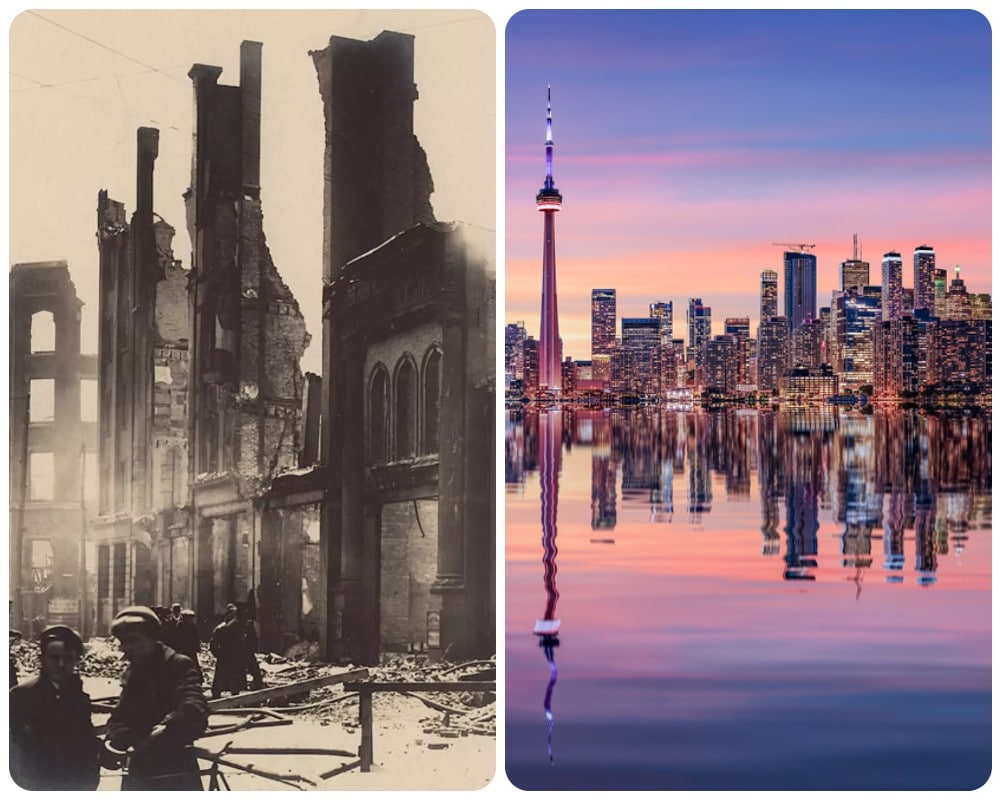
Not only is trendy, cosmopolitan Toronto the most populous city in Canada, it’s also the fourth most populous city in North America.
Barcelona, Spain
This first photo shows Basílica i Temple Expiatori de la Sagrada Família, aka the Sagrada Família, under construction circa 1940. The brainchild of architect Antoni Gaudí, work on the landmark began in 1882.
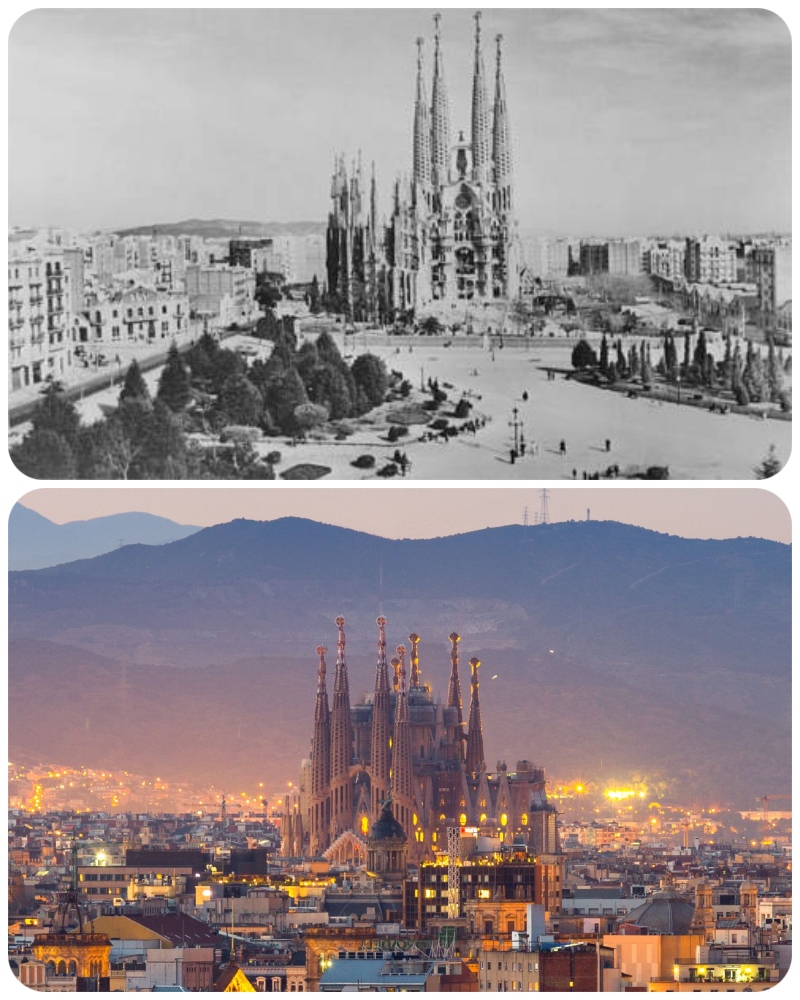
The breathtaking cathedral combines Gothic and Art Nouveau styles. Gaudí devoted his life to the project and was buried in the crypt. When he died in 1926, less than a quarter of the project was complete. Nowadays, the Sagrada Família dominates Barcelona’s beautiful skyline, but would you believe it’s still not finished?
Singapore, Republic of Singapore
This Asian island country and city-state grew out of much turmoil. Chinese traveler Wang Dayuan first mentioned the island around 1330 AD, and it later became a trading outpost of the British Empire. During World War II, Singapore was occupied by Japan but returned to British control after Japan’s surrender in 1945.

Since its independence in 1965, Singapore has evolved from one of the world’s poorest countries to one of the world’s most advanced. Today, it’s a fascinating, modern melting pot of Malay, Mandarin, British, and Indian people, cuisine, and culture.
Canary Wharf, London, UK
If you’ve seen Thor 2: The Dark World, you may recognize the Royal Naval College and Queen’s House in Greenwich, London. Thankfully, these buildings haven’t changed at all, but East London has been redeveloped beyond recognition. The Isle of Dogs, Limehouse, and Poplar were among the world’s busiest docks for hundreds of years.
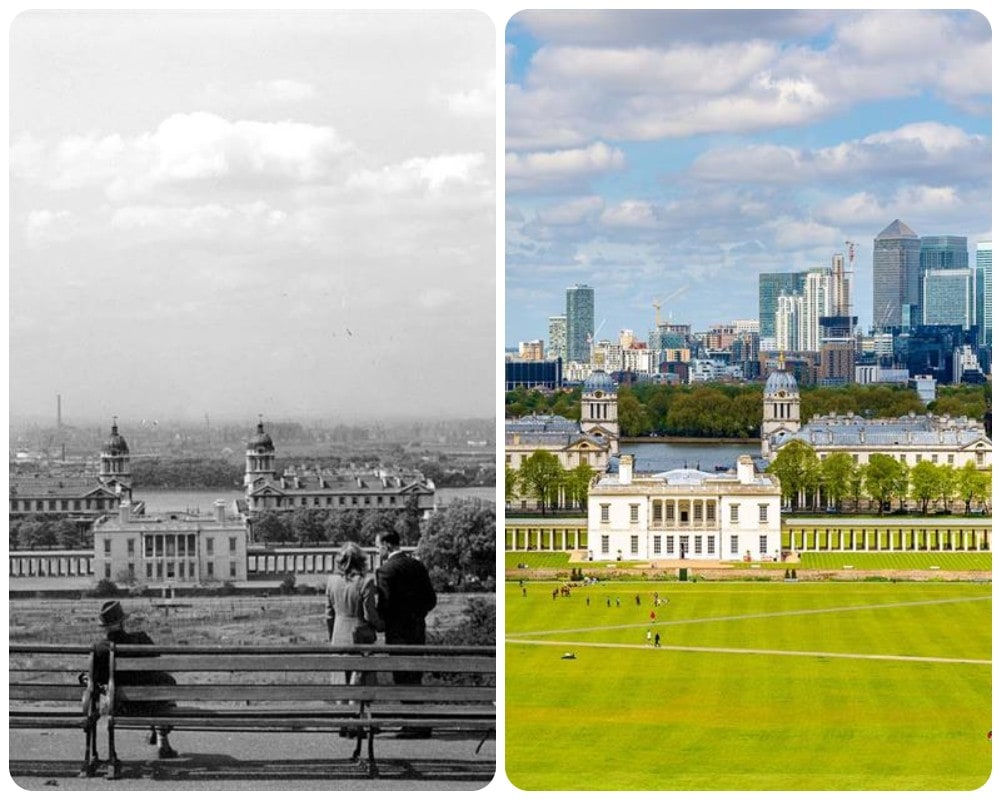
But, the shipping industry disappeared by the early 1980s. In their place, up sprung London’s new financial center, Canary Wharf. Opened in 1991, several tall skyscrapers now occupy the former West India Docks site.
Rio De Janeiro, Brazil
Brazil’s second-most populous city was founded in 1565 by the Portuguese. This first photo shows how Rio De Janeiro (River of January) looked in the 1890s. The famous statue of Christ the Redeemer doesn’t feature as it wasn’t built until the 1920s.

Of course, the shape of the islands remains the same, but Rio is now a bustling city of monstrous high-rises. Its metropolitan area is home to 12 million football-loving, carnival-visiting, salsa-dancing people.
Shenzen, China
Shenzhen sits on the Pearl River north of Hong Kong. In 1964, it was still a tiny town surrounded by mountains. But after the Special Economic Zone reform of the early 1980s, it boomed to become the largest port city in the world and China’s Silicon Valley, housing telecoms company Huawei and drone-maker DJI.

As of 2020, Shenzhen had a population of 17.56 million, third only to Shanghai and Beijing. The city contains the second-highest number of skyscrapers worldwide and the fifth-highest number of billionaires.
Fortaleza, Brazil
Until not so long ago, Fortaleza was an idyllic beach town lying on the Atlantic Ocean in the northeastern Brazilian state of Ceará. It featured beautiful tropical beaches punctuated by red cliffs, palm trees, dunes, and lagoons.
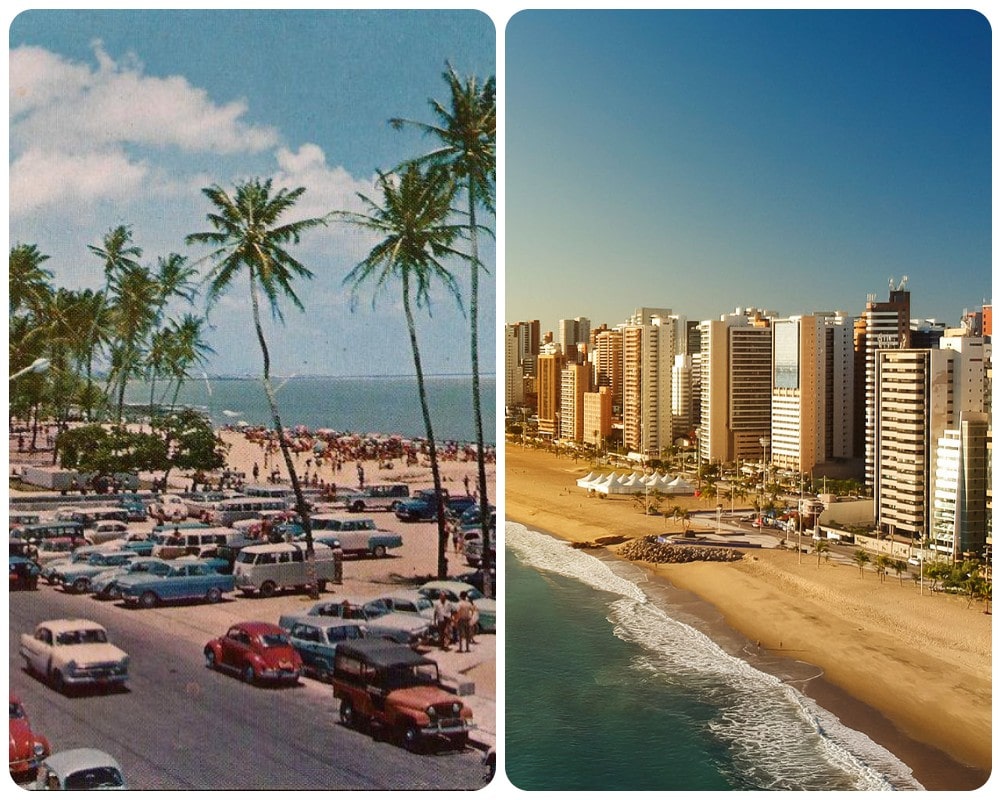
But then, something awful happened. Tourists! The ever-expanding town eventually swallowed Maracanaú to become Brazil’s fifth-largest city. Today, Fortaleza comprises 16 miles of urban beaches and multi-story condo buildings filled to the brim with 2,500,000 bronzed, buff, beach-loving Brazilians.
Chicago, USA
Chicago has a fascinating history. In 1833, the town was founded with a population of 200. 1871’s Great Chicago Fire destroyed the city. But by 1900, it was the world’s fifth-largest city, with over a million citizens. In the 1930s, Chicago was famous for its gangsters, who would rob banks with Tommy guns.

At the same time, the Great Depression led to the Great Migration, when African Americans left the South for the industrialized north. Chicago became a steel-producing boom town, creating the money to build today’s pristine skyline and a yacht-filled harbor.
Melbourne, Australia
Can you believe that First Nation Australians have lived in the Melbourne, Victoria, area for at least 40,000 years? In 1835, intrepid explorer John Batman sailed up the Yarra River to establish the village of Melbourne.
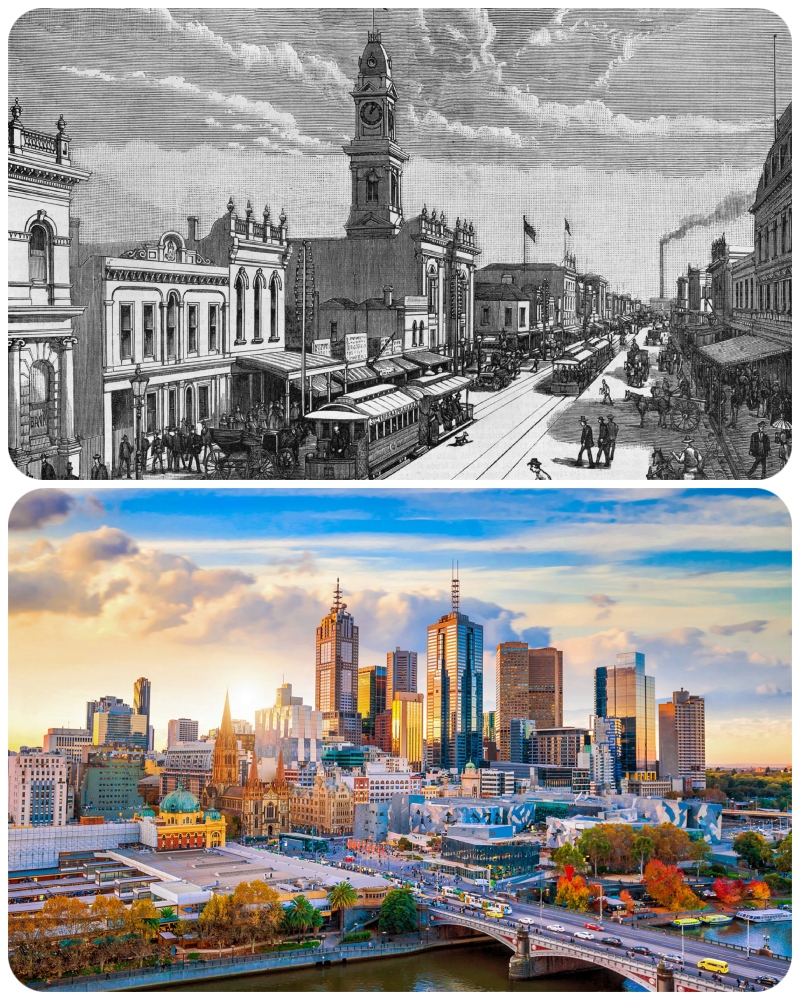
Queen Victoria declared it a city in 1851, and while Flinders Street sported lovely Victorian buildings, the port was a dirty, polluted mess. Fast forward a century and Melbs is a vibrant, buzzing financial center. One million people who love cafe culture, arts, entertainment, and sports at landmarks like the Marvel Stadium live there.
Cardiff, Wales, UK
For hundreds of years, the capital of Wales was home to a bustling port, sending Welsh coal all over the world. But, when coal mining and the shipping industry went the way of the dodo, Cardiff Bay fell into disrepair.
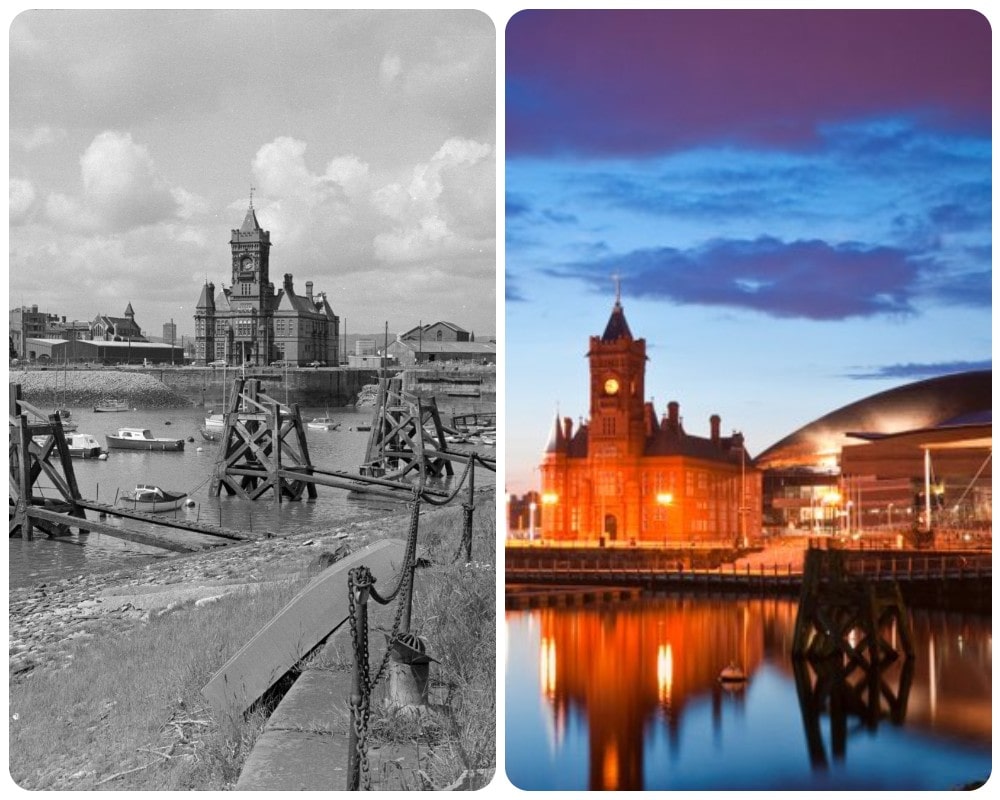
In the early 2000s, though, the local government redeveloped the whole area to create a mix of housing, open spaces, commerce, leisure, entertainment, and industry. Crowned by the 73,931-seat Millennium Stadium, Cardiff Bay has been regenerated from the butt of jokes into a world-beating modern city.
Jakarta, Indonesia
Established in the fourth century as Sunda Kelapa, Indonesia’s capital sits on the northwest coast of the world’s most populous island, Java. For centuries, Jakarta has been a heady melting pot of Javan, Malay, Chinese, Arab, Indian and European cultures, religions, architecture, and yummy cuisines.
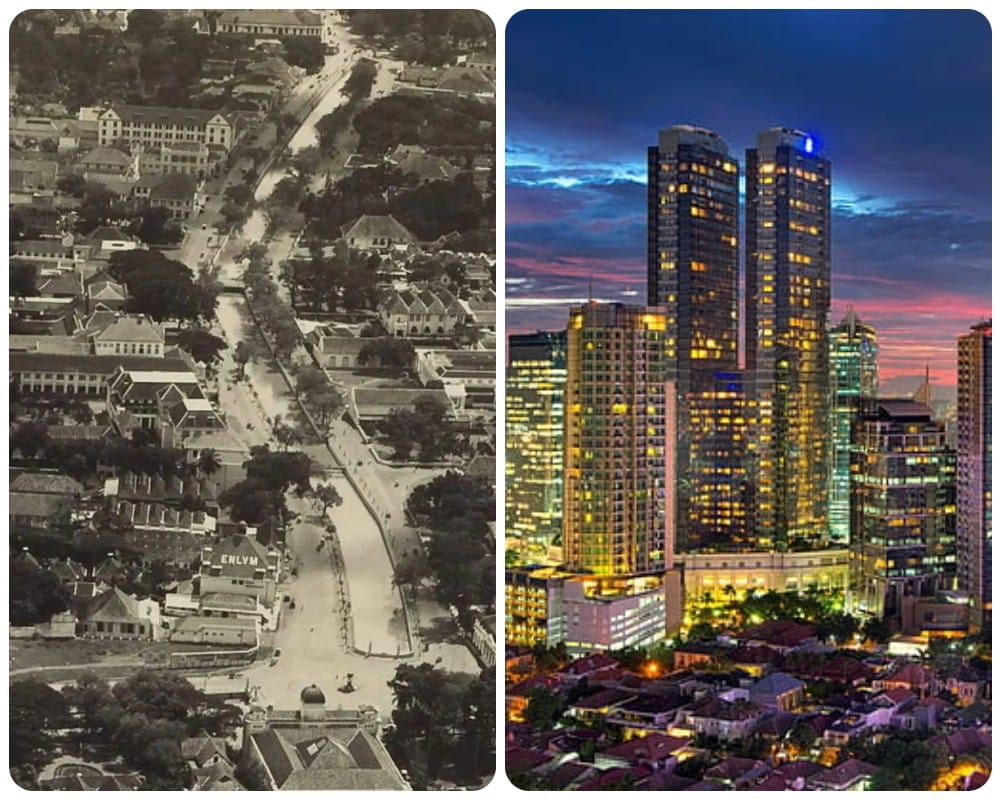
Nowadays, permanently traffic-jammed Jakarta is home to 10 million people, making it the second-largest metropolitan area in the world (after Tokyo). Jakarta is sinking up to 6.7 inches yearly, so it may look very different in a few decades.
Berlin, Germany
During World War II, Berlin was flattened by retaliation raids. By the war’s end in 1945, the city lay in ruins after streets, landmarks, and buildings (including 600,000 apartments) were destroyed. After this, the stadt was split down the middle into East and West Germany by the Berlin Wall.

The city was rebuilt brick by brick. Since German reunification in 1990, substantial redevelopment has turned Berlin into a thoroughly modern municipality, punctuated by historic charm from the few buildings that weren’t destroyed.
Long Beach, USA
This Californian town began life as a ranching community called Willmore City. Unhappy with the name, inhabitants renamed their town Long Beach after its long, wide beaches. The railroad, port, and oil industry turned the city into a booming hub of industry.

From 1902 to 1910, Long Beach was the USA’s fastest-growing city. Lying 20 miles south of Los Angeles, the city now boasts a population of 470,000 culture-loving Californians. The Port of Long Beach is the United States’ second busiest container port.
Venice, Italy
Fortunately, not all our cities have become one giant traffic jam. Venice has no roads as it’s a city built on canals. Despite Bond villains and Mysterio from Spider-man: Far From Home doing their best to destroy Venice, its captivating cathedrals, pretty piazzas, beautiful bridges, and gorgeous gondolas have hardly changed for the last four or five hundred years.

That said, the beautiful northern Italian city is sinking quicker than the captain of the Titanic could say, “What iceberg?”
Have you ever imagined what the world’s most famous cities used to look like in the old days? In the last hundred years, architecture, technology, town planning, and transport have changed our metropolises. So, join us as we hop in our time machine and travel back through the years on a globe-hopping adventure to see how our cities have grown and evolved beyond recognition.